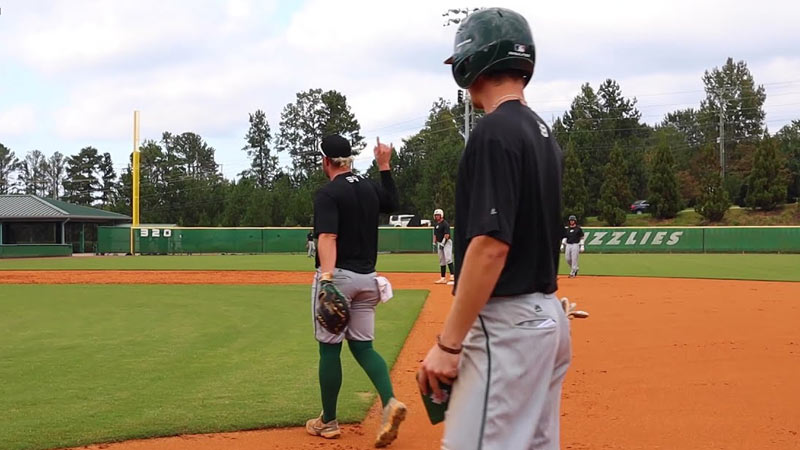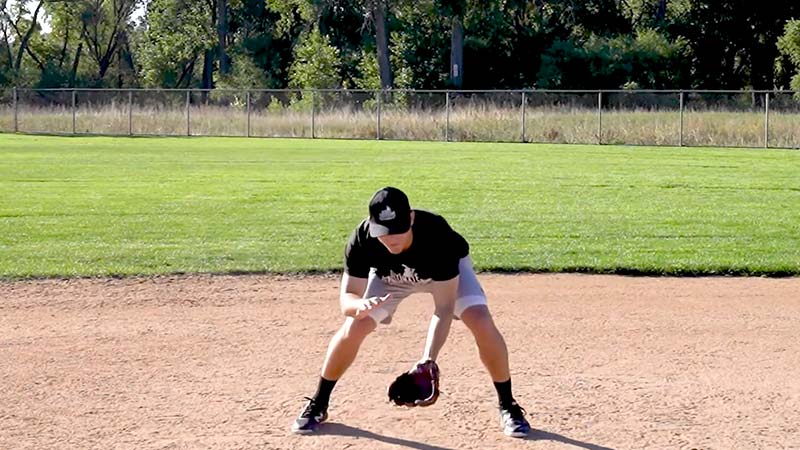Here we are today with exclusive tips on baseball. Our hot topic today is defensive drills in baseball. So, what is a defensive drill? In a baseball match, have you ever thought about how the defensive players harness their skill on the diamond?
If not, once in a while, you must have heard the baseball coach speak out loud, “Get it out, boys! We need more practice!”
It is a top priority of any professional coach to effectively arrange competitive, and exciting practice fields. So that, defensive players can face all the challenges in the practice field and relax in the actual match.
Defensive Drills in Baseball
We might see all the force in the field. But a lot of pull is grabbed behind it. Remember when Houston Astros brought out a defensive win beyond replacement? To our wonder, they gained all their way to the World Series.
We can take a lesson from this, all games are important. In baseball, there are no big or small tournaments. All the associates with baseball – coaches, players, and everybody else should take it to their mind and practice accordingly.
For success like this, a team must be well prepared in defensive strategy. Be it a youth club or a high school team, a reliable coach will train them to the end. To do so, there is no alternative to practice. Check out these best practices for defensive drills in baseball.
Drills for Fielders
You might already know fielding is the cornerstone of a powerful defense. It is an important practical strategy to catch, control, and field the ball with a fresh start in the practical field. We will discuss best drilling practices for infielders.
Drill for Infielders
Ground Ball Drill
A ground ball is one of the most common types of balls in baseball. Often, batters hit it and fielders need to make a move on it to prevent the batter from reaching the base or having a double play.
Ground balls travel at a lower trajectory. This is why, infielders need to work firmly on their hand-eye coordination to read the path of the ground ball. Infielders need to keep in mind that, there are two ways to deal with the ground balls; delivered to your direction.
- Funnel: Also known as the ready position, the infielders must get used to the funnel method. It basically means the batter has to absorb the ball into his body.
In the ready position, the defenders slightly bend their knees with weight on the ball of their feet and gloves out in front of them. The ready position is initiated just before the batter contacts the ball.
It is said that the ready or funnel position offers more scopes for quick reactions increasing the infielder’s efficiency to the ground ball.
- Reverse Funnel: It is exactly the opposite of a ready position in baseball. In reverse funneling, the fielders move through the ball. This approach is ideal when ground balls are delivered in certain directions.
Imagine a scenario when ground balls are hit to the backhand side of the infielder. The infielder reaches across their body with their glove hand to pass through the ball. And this is called reverse funneling.
The fielders have to field the ball with gloves on the side of the body; meaning “funneling” the ball towards the center of the body.
Where does reverse funneling apply?
Reverse funneling is generally used In circumstances when the infielder needs to shift from fielding the ball into making a throw. Using this approach, infielders can ignore extra motion and additional time needed to cross their body for a traditional backhand.
Reverse funneling is an easy way out for a direct transfer to the throwing hand. But keep in mind, both strategies are ideal at different stages of infielder defense.
To ensure proper charging of the ground balls, infielders must bend their wrists with fingers driven toward the ground.
Triangle Drill
In baseball, triangle drill is a common fielding technique for the infielders to work on their footwork. Probably, you are wondering about the name! This drill represents the three bases (first base, second base, and third base) of baseball.

During the triangle drill, three cones or markers are placed in the shape of a triangle. Usually, it’s the players who group in three in a triangle. They roll as a coach, shortstop (ss), or second baseman.
The drill begins with the infielders at one cone and fielding ground balls that hit them. It, of course, simulates different case scenarios, such as charging in for a slow roller or moving laterally for a ground ball. This also includes slow rollers, hard-hit balls, or in-between hops. Thus, putting them in a situation to make a quick and accurate throw to the next cone by following the sequence of the bases.
To put it simply, the triangle drill involves a group of infielders rotating between the three positions, taking turns in fielding the ball and making throws. The rotation can be clockwise or counterclockwise.
Triangle drill promotes teamwork, communication, and coordination between infielders. They work together to execute the match efficiently.
Slow Roller Drill
It is an important infielder drill to teach them how to throw on the run and deal with a complex slow roller play. This drill genuinely focuses on the infielders’ ability to field slow rollers with precise and direct throws.
Slow Rollers are usually slowly hit balls and can be one of the most difficult picks in the match. Infielders have to charge the ball hard to deliver a powerful throw on the run.
The drill starts when a coach or teammate hits or rolls slow ground balls to the infielder. Then he must charge the ball, field it cleanly using proper technique, and quickly make the throw to first base.
Any variations of this drill can involve fielding slow rollers to make throws to other bases, simulating different game situations. This drill enhances infielders’ fielding instincts, speed, and throwing accuracy.
Double Play Drill
In baseball, a double play is a common scenario. You might often notice when two offensive players are ruled out in the same game, it’s a double play.
Baseball coaches often focus on Double Play Drill to earn a privilege on the field. Through this drill, infielders turn double plays smoothly and efficiently. The double-play drill also offers players to play multiple positions, and fields, and toss a game-type situation.
The drill starts with throwing the ball to the third baseman. The third baseman then throws the ball to the second to start a double play. However, in case he misses the ground ball or gets a bad throw, he will go to the end of the line (in this case, it is the first base).
This offers the other players – who had been in a position for some time the opportunity to move up to the next position. The queue goes as first to second; second to shortstops, and shortstops to third.
We discussed shortstops earlier. Being the captain of the infield, the shortstop is a defensive position and typically lies between second base and third base. Shortstops are highly responsible for fielding ground balls hit in their direction and making plays to record outs.
Short Hop Drill
Every drilling program must have at least one short hop drill. It is a simple yet effective drill to improve the overall eye and hand coordination of infielders.
Short hops are one type of ground ball. It bounces closer to the fielder in a low trajectory. A ground ball will refer to as a short hop when it contacts the ground and takes a hop that is relatively short in the distance before reaching the fielder.
Short hops make the field more competitive. Thus, every program should have a mandatory drilling program for short hops.
This drill starts with two players. They exchange between working on fielding the short hop and hitting the hop ball to another player.
To field a short hop, the fielder will get into the ready position. Their hands will be out in the front with the intention to catch the hop ball. Plus, their feet should also be lined up to get the ball effortlessly. This is exactly the funnel/ ready position we were talking about.
Double Barrel Fielding Drill
Next in line is the double-barrel fielding drill. Upon completion of the short hop drill, infielders should dive deeper into the double barrel fielding. Why?
Because it helps infielders improve their ability to work together in close proximity. Plus, they can also learn to handle ground balls effectively with smooth execution. Double barrel fielding drill requires two coaches. And if you can’t manage two coaches, you can get it done with two players.
Two infielders work side-by-side to simulate game-like scenarios and improve their ability to handle ground balls hit in close proximity to each other. Both infielders must react quickly, move to the ball, and field it cleanly using proper technique. The focus is on efficient footwork, getting in front of the ball, and using the glove to funnel it.
Once the ball is fielded, each infielder makes an accurate throw to a designated target, such as first base or a nearby bucket.
The double barrel fielding drill is best known to enhance communication, coordination, and reaction time while simulating game-like situations that infielders may encounter during actual gameplay.
Backhand Drill
It is perhaps one of the most common types of basketball practice drills for infielders. You might find that most coaches start with this genuine drill to deal with ground balls that are hit to the backhand side.
The backhand refers to the non-glove side of the infielder, which is typically the left side for a right-handed player and the right side for a left-handed player. The Backhand drill improves the proper footwork, body positioning, and glove technique required to make successful backhand plays.
How does it start in the field?
Infielders start in their positions – especially the ready position and a coach hits or throws backhand ground balls to them. Infielders must move sideward, get into the proper fielding position, and field the ball cleanly using the backhand technique.
Your team coach has to ensure that the throwing side foot is in the forward direction while fielding a backhand. Your head should be down and your eyes opt to target the ball as it moves along into the glove.
This technique helps infielders develop confidence, agility, and proficiency in fielding backhand ground balls.
Here are a few examples of defensive drills for infielders in baseball. But there are more like Reaction Drills, Barehanded Framing Drills, Around The Horn” Defense Drills, and more. If you are a coach and planning on aggressive drilling programs for your defensive infielders, start out with these strategies.
But if you are a pro and need more from defensive drilling in baseball, stay in touch with us and we got your back.
Wrapping Up Defensive Drills in Baseball
So far, we have covered one part of the defensive drills for infielders. But the drills are different for outfielders, pitchers, and even catchers – we will cover those too in sequence.
Defensive drills will boost the defensive skills of the defensive players of your team. We never know how far we can go unless we try it. And, defensive drills offer your teams to adopt different strategies and fight them back in the field.
Remember, at the end of the day, it is a practice that you need for yourself and your team members to introduce a baseball match filled with strategies and a competitive mindset.
Do you like our article? If you do, let us know in the comment section. Also, please share this article with your baseball lover friends and allow them to learn about behind the scene scenarios too.







